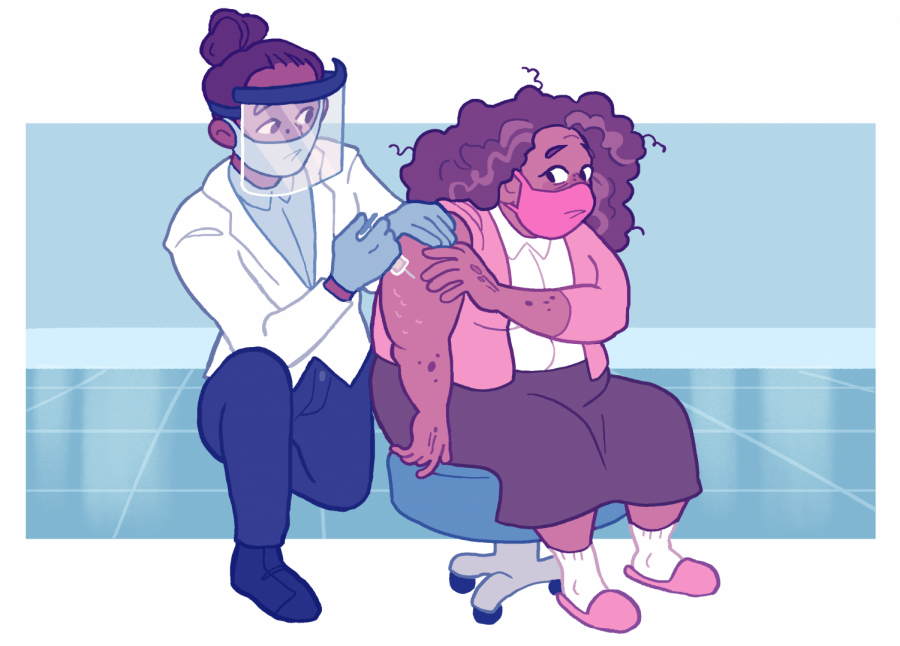UT researchers receive COVID-19 vaccine manufactured using their research
April 14, 2021
Daniel Wrapp religiously refreshed his spam folder every two hours before he finally got an email from UT Health Austin to book his first vaccine appointment.
“I made the first available appointment the next day,” said Wrapp, a molecular biosciences postdoctoral fellow.
Wrapp is part of a research team led by molecular biosciences professor Jason McLellan, whose work mapping the SARS-CoV-2 spike protein in February 2020 helped in the development of all three vaccines authorized for emergency distribution in the U.S. today.
McLellan said in an email getting vaccinated with the vaccine he had a hand in designing was the “realization of a career dream,” as he was able to improve people’s health as scientists. He said he is grateful to all the researchers who did their part.
Wrapp and McLellan received their first doses of the Pfizer vaccine from UT Health Austin at the end of March. Wrapp said he was impressed by how quickly vaccine administrators like UT Health Austin organized the infrastructure necessary to give the vaccines.
“That was really heartwarming and overwhelming to see all the volunteers giving their time to help people,” Wrapp said.
Nianshuang Wang, a former postdoctoral fellow who worked on the project, received his first Pfizer vaccine Monday. He said although he was excited to be vaccinated, he was happy to wait his turn so older individuals and frontline workers could get their shots first.
The breakthrough at the lab was the result of years of research starting long before the pandemic, Wang said. He said researchers began engineering the spike protein from the MERS coronavirus in 2014 when he joined McLellan’s lab at Dartmouth College. McLellan and his team moved to UT in January 2018.
“The Pfizer and Moderna vaccines really were not developed in one year,” Wang said. “It’s multiple years of fundamental work before the pandemic which actually set the foundation for this for this quick reaction.”
Wrapp said that when the seriousness of the pandemic became apparent, he felt a sense of responsibility to share the team’s knowledge of coronavirus proteins. The team, along with the National Institutes of Health, quickly began mapping the SARS-CoV-2 spike protein for use in a vaccine, Wrapp said.
“I still hopefully have a lot of career left ahead of me,” Wrapp said. “But I think that is probably one of the coolest things that I will ever get to experience.”











